A lovely home garden isn’t complete without the peony, which is Mother Nature’s crown jewel. Peonies are loved by everyone and will give you years of beauty in your garden and home. All it takes is some planning, work, and time.
The peony and rose together create the ultimate spring garden duo. With their sumptuous romantic blooms in shades of white pink, red and yellow these classic flowers are cherished additions to any garden. When combined in a thoughtful design, peonies and roses can form the backbone of a beautiful landscape that blooms in late spring and delights the senses.
In this article, we’ll explore tips for planting peonies and roses together to create a cohesive garden plan. Follow these simple steps for mixing and matching these botanical beauties.
Choosing the Right Peony and Rose Varieties
With hundreds of cultivars to select from, it’s important to choose complementary peonies and roses suited to your climate and growing goals
-
Consider bloom time – Select early, mid and late season bloomers to extend color from spring through early summer Pair early peonies like Paeonia lactiflora ‘Red Charm’ with roses like Rosa ‘A Shropshire Lad’ that bloom in late spring
-
Match colors and forms – Blend peony and rose varieties in harmonious hues like soft pink or crimson reds. Combine double blooms with open, loose flowers for textural interest.
-
Include fragrant varieties – Opt for intensely scented roses and peonies to permeate the garden with fragrance.
-
Choose the right size – Scale larger peony varieties with taller climbing roses. Smaller roses complement more compact peonies.
-
Check hardiness – Ensure all selections are hardy in your planting zone. Most peonies thrive down to zone 3 while roses need zone 5 or warmer.
Planting Peonies and Roses for Success
Proper planting sets your peonies and roses up for healthy growth and maximum blooms. Follow these tips:
-
Provide full sun – Peonies and roses require a minimum of 6 hours of direct sunlight per day. Morning sun is essential.
-
Prepare the soil well – Amend planting beds with 2-3 inches of compost to improve drainage and nutrients. Most roses and peonies thrive in fertile, humus-rich soil.
-
Give peonies room – Space peonies 3-4 feet apart so they can develop their bushy form. Plant roses 2-3 feet apart depending on variety.
-
Plant peonies properly – Bury peony roots just 1-2 inches below the soil surface. Deeper planting prevents blooming. Add support rings to hold up heavy flowers.
-
Water thoroughly after planting – Water peonies and roses deeply after planting and whenever soil dries down 1 inch. Consistent moisture is key while plants establish.
Designing a Coordinated Layout
When designing your peony and rose garden, keep these layout tips in mind:
-
Group varieties together – Plant 3-7 plants of the same peony or rose cultivar together for cohesion. Repeat featured varieties throughout the garden.
-
Use roses as anchors – Place roses along fences, arbors or property lines to define the garden’s backbone and take advantage of vertical space.
-
Mass peonies towards the center or middle border – Peonies make excellent anchor plants along a mid-border. Place taller varieties towards the back.
-
Surround with companion plants – Fill in around peonies and roses with annuals, perennials and shrubs that harmonize in color, texture and bloom season.
-
Include evergreen structure – Incorporate evergreen shrubs, trees or hedges to provide architectural bones and year-round interest.
Combining Peonies and Roses in Garden Beds
Here are some tips for incorporating peonies and roses into key areas of your landscape:
-
Formal rose garden – Outline geometric beds with boxwood hedging and climbing roses on an arbor. Fill beds with bush roses underplanted with peonies.
-
Cottage garden – Mix peonies, heirloom roses, foxgloves, iris and other perennials together in a casual, informal display.
-
Herb garden – Tuck fragrant roses and peonies among herbs like sage, lavender and catmint.
-
Mixed border – Blend peonies, roses, ornamental grasses, hydrangea and other medium-sized shrubs along a fence or property line.
-
Containers – Plant compact patio rose varieties and dwarf peonies together in pots on entry ways, patios or in small courtyard gardens.
Caring for Peonies and Roses
While easy to grow once established, peonies and roses need proper care and maintenance to thrive:
-
Water 1-2 inches per week – Provide supplemental irrigation if rainfall is inadequate, especially while plants are young. Established plants need deep weekly soakings.
-
Apply organics annually – Topdress beds each spring with 2-3 inches of compost or well-rotted manure to maintain soil nutrition and structure.
-
Fertilize – Feed roses and peonies in early spring as growth begins and again 6-8 weeks later using a balanced fertilizer formulated for roses and flowers.
-
Prune – Remove spent rose blooms promptly by cutting just above a healthy outward facing leaf node to encourage reblooming. Cut back peony stems to ground level in fall once foliage has died back.
-
Protect from winter damage – In cold climates, mound compost or leaves over rose crowns to insulate. Leave peony stems over winter to help protect underground buds.
-
Stake for support – Set up stakes covered with soft material around peonies and climbing roses to keep heavy blooms upright and prevent damage.
-
Monitor for pests and diseases – Practice prevention by removing fallen leaves and petals. Promptly treat any fungal issues or infestations of Japanese beetles, aphids, etc.
Inspiring Peony and Rose Garden Design Ideas
Here are a few classic design ideas that combine roses and peonies beautifully:
-
Cottage Garden – Blend peonies, English and David Austin roses, foxgloves, catmint, lavender and salvia in soft pastel hues for a quintessential cottage garden brimming with charm.
-
White Garden – A serene and elegant theme is created by limiting the palette to white and green. Include white peonies, Alba roses, Astilbe, artemisia and Japanese painted fern.
-
Fragrance Garden – Focus on choosing the most fragrant peony and rose varieties to create a soothing, relaxing and romantic private sanctuary filled with perfume.
-
Rose Arbor – Frame a focal point seating area with a classic rose-covered arbor. Underplant with peonies and iris in complementary colors of purple, yellow and soft pink.
-
Mixed Border – Incorporate peonies, shrub roses, hydrangea, daisies, ornamental grasses and other perennials along a fence line or property border. Allow informal mingling.
With thoughtful planning and care, a garden featuring peonies and roses promises to delight the senses each spring. Their lush, voluptuous flowers and intoxicating fragrance create a beautiful seasonal display to treasure.

Check out all my gardening tips for creating an English Rose Garden, to add visual interest to your yard.
Here are some of my best tips for Creating an English Rose Garden. Spring time is the most common time to plant and add beautiful color into your yard. Roses are one of my favorite flowers and prolific bloomers that I have in my yard that never disappoint year after year.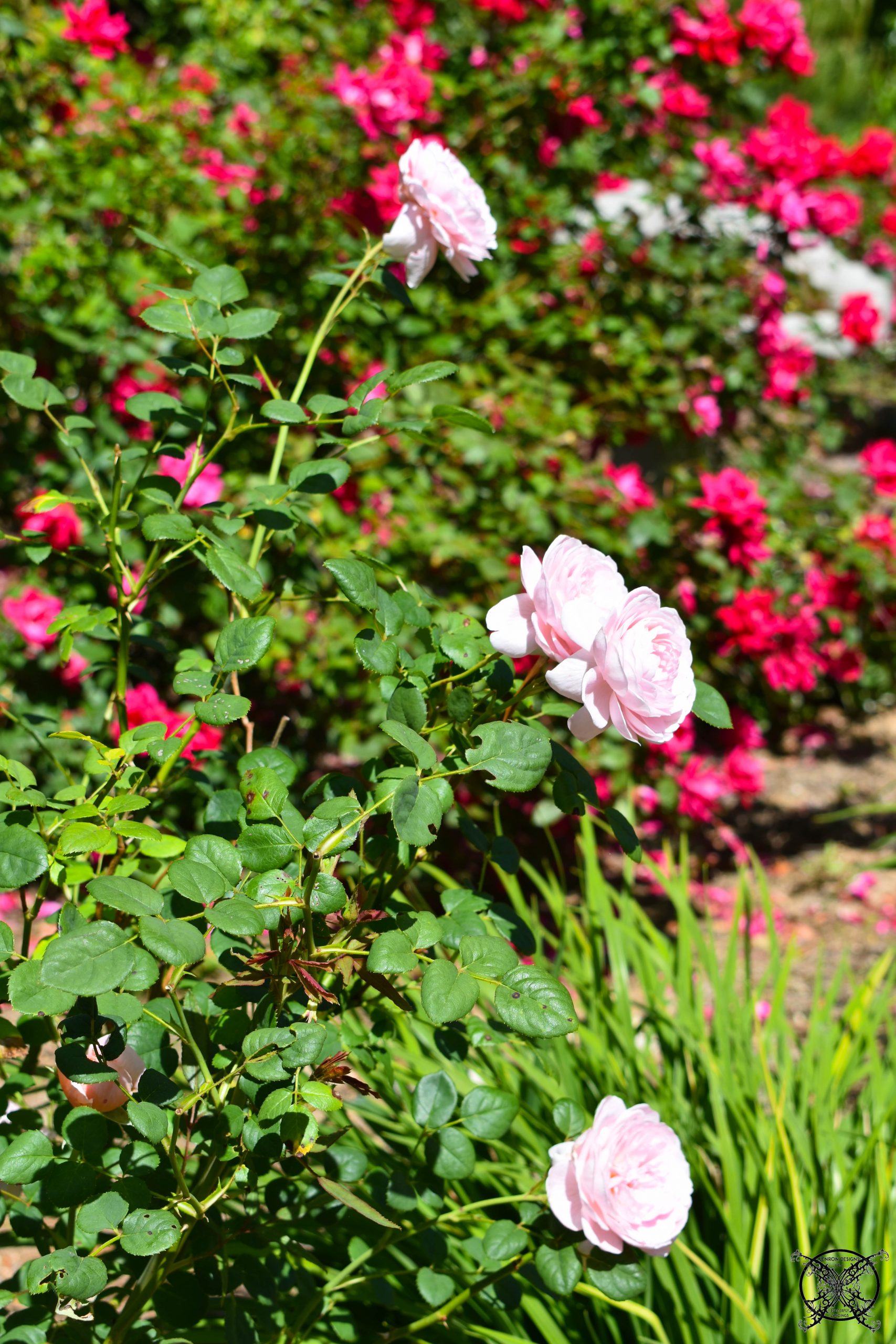 I do try to get unique bloomers to create an English style rose garden so I will always have a nice focal point throughout spring and summer months. While I do have a ton of the Knock Out rose variety in my yard, I also love to use and feature high end roses as well like the David Austin roses.
I do try to get unique bloomers to create an English style rose garden so I will always have a nice focal point throughout spring and summer months. While I do have a ton of the Knock Out rose variety in my yard, I also love to use and feature high end roses as well like the David Austin roses. 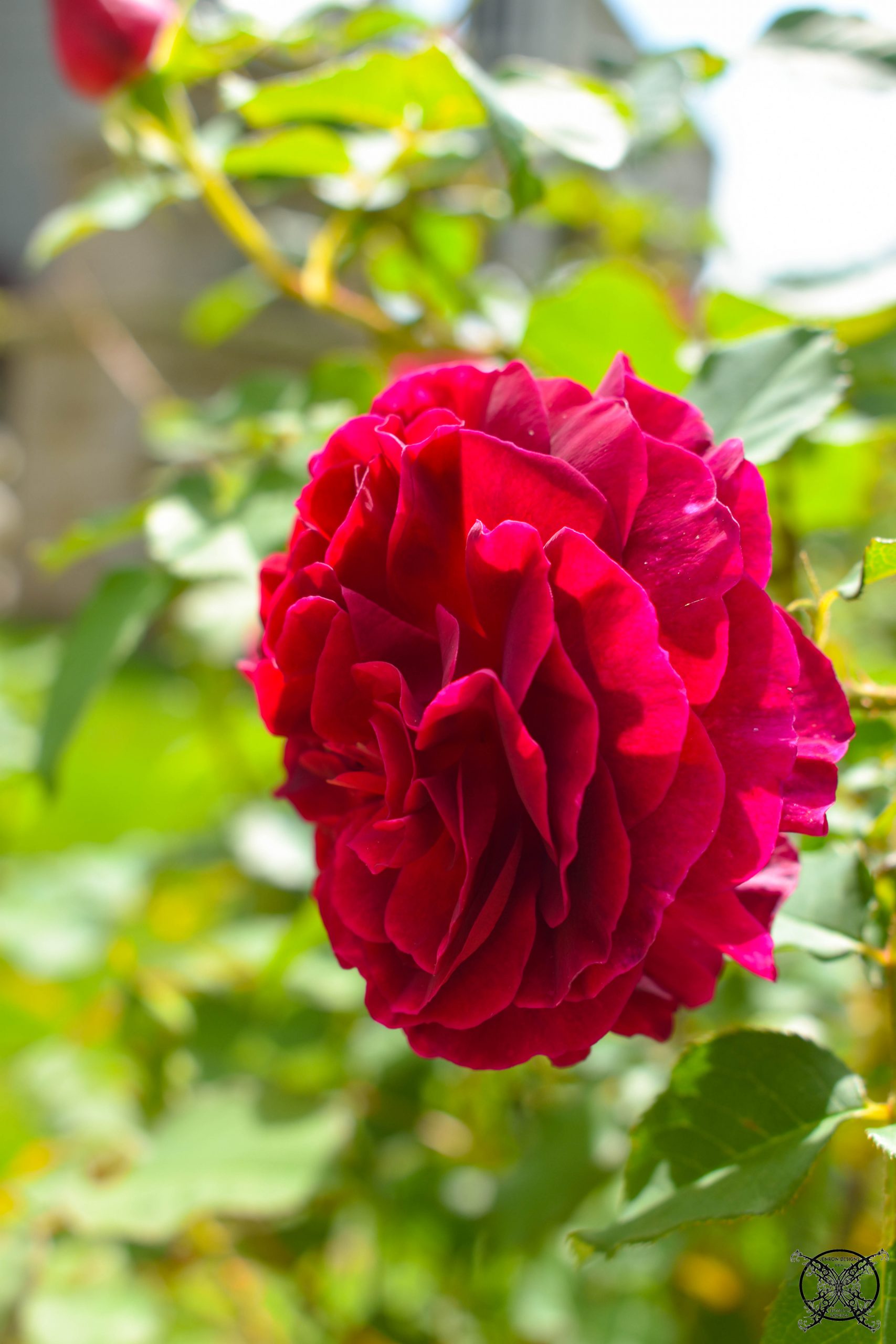
Planting & Ordering David Austin Roses
You may remember a couple of years ago I ordered a complete starter kit of the David Austin Roses, which originated in England. They were a favorite of Queen Elizabeth II and can be seen on display in Kew Gardens. This is where I originally fell in love with a few of these varieties, while visiting Kew Gardens a few years back. I knew I wanted to ordered some of these varieties for my own garden, like the Darcey Bussell seen above, and the highly sought after Juliet which is a beautiful and rare peach color.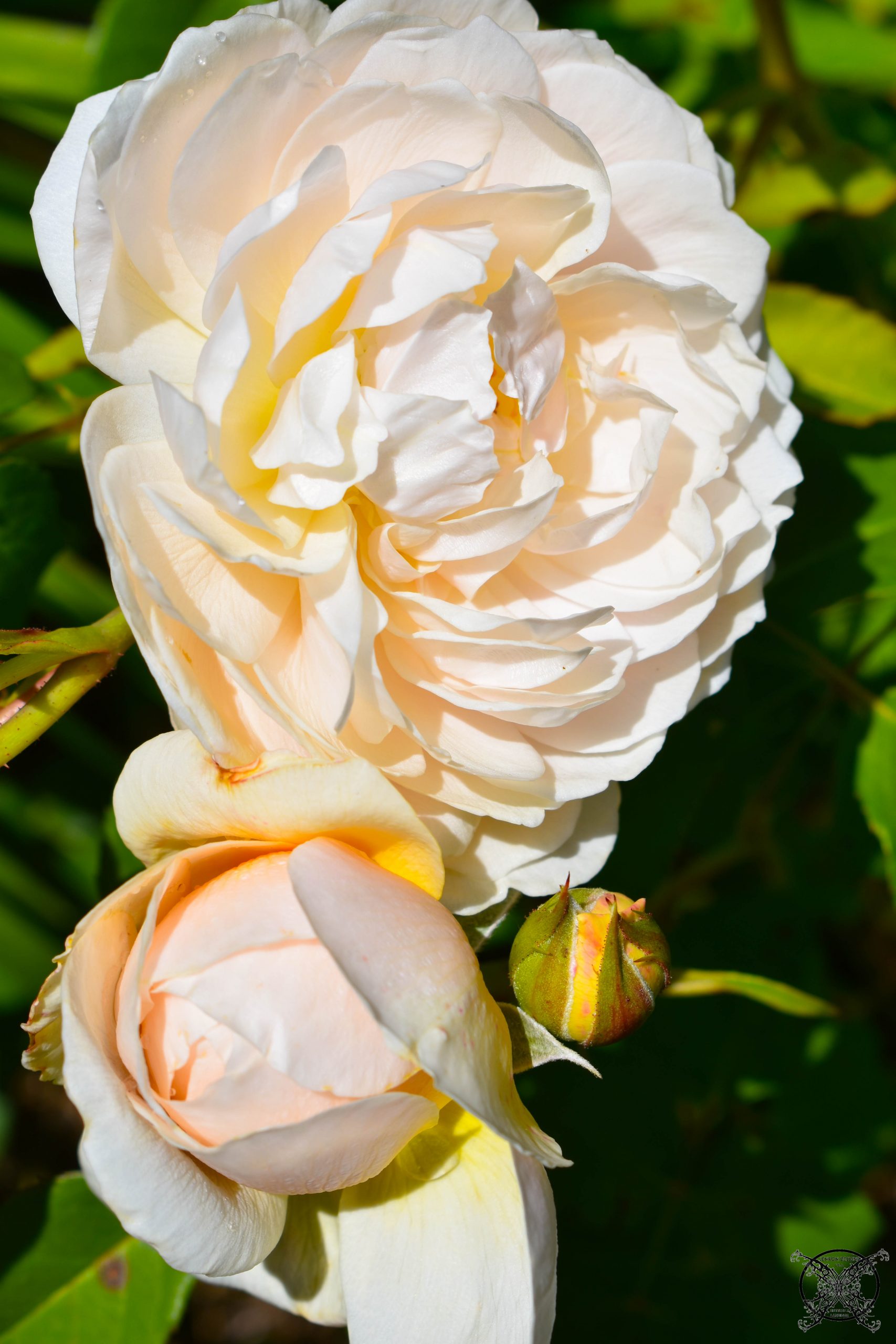 One of the main things I love about this variety is just how much they resemble a peony with the double ruffle petals and foliage. It is that reason they are highly sought after in a lot of wedding flowers and floral design work, along with the beautiful color variations as seen above in Desdemona and Heritage.
One of the main things I love about this variety is just how much they resemble a peony with the double ruffle petals and foliage. It is that reason they are highly sought after in a lot of wedding flowers and floral design work, along with the beautiful color variations as seen above in Desdemona and Heritage.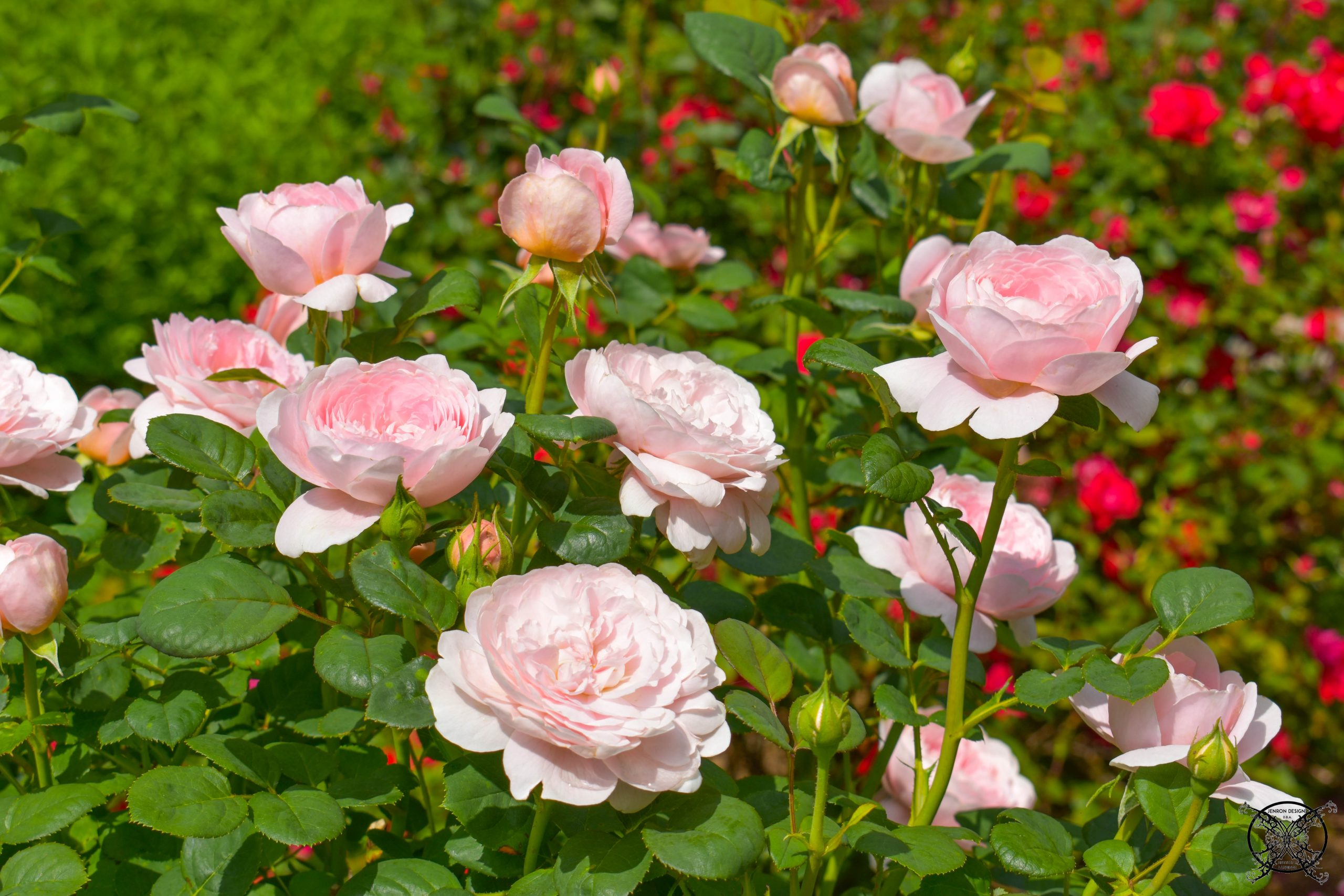 A few of my other favorites, which I have planted but are not blooming just yet in my garden:
A few of my other favorites, which I have planted but are not blooming just yet in my garden:
- Roald Dahl a beautiful apricot yellow with double blossoms
- Munstead Wood velvet crimson with hints of blackberry
- Imogen cream to pale yellow with frilly petals
- Golden Celebration rich golden tea rose with strong fragrance
- Bathsheba subtle apricot-pink with soft yellow double blooms
Good Backdrops for a Rose Garden
A few things I have learned along the way are to add things with good background structure to make your roses pop. Evergreen trees and shrubs that can have the possibility of producing blossoms. This will create a nice framework or backdrop for you garden even when they may not be in bloom. Plus if you go with an evergreen foliage you will still have some green in the winter when the roses are dormant and not very pretty since they are just sticks and thorns. Here is a list of a few of my favorite background plantings:
- Magnolias- varieties like Little Gem, Bracken’s Brown, & Teddy Bears (large Summer blooms fragrant)
- Loropetalum or Weigela (spring blooms)
- Pieris Mountain Fire
- Gardenias (seen below) fragrant summertime blooms perfect to float in a dish or pin in your hair
- Camelias or Rose of Sharon (winter and early spring blooms)
- Hollies- Chestnut Leaf & Golden King are two of my favorites for leaf colors and shape with bright red berry clusters
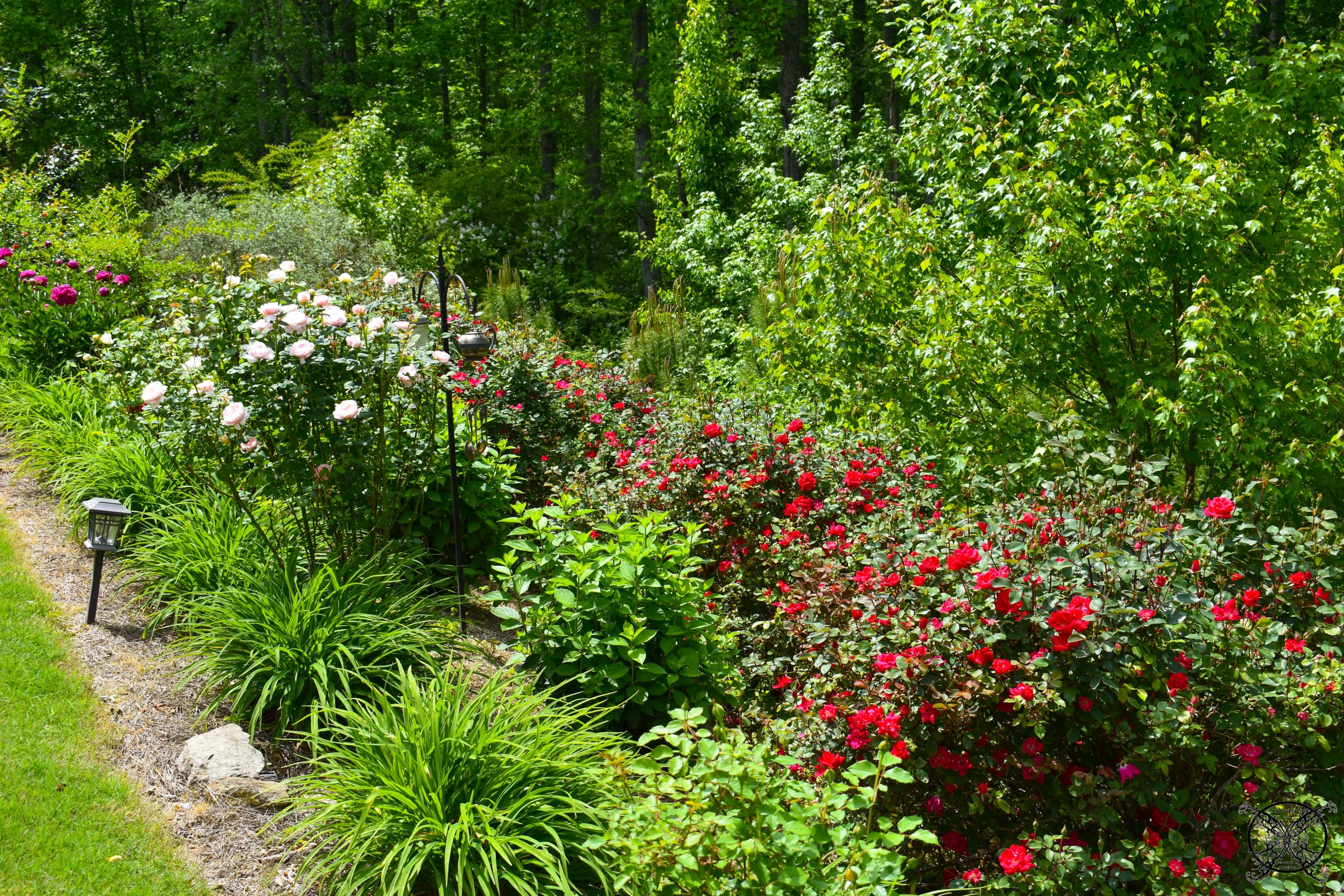
Create Your Own Cutting Garden
One of my true passions for every yard is to create a cutting garden, so I can cut fresh blooms for every season directly from my yard. There is no greater joy than to go out and cut fresh flowers from your own yard and create a vase arrangement for yourself.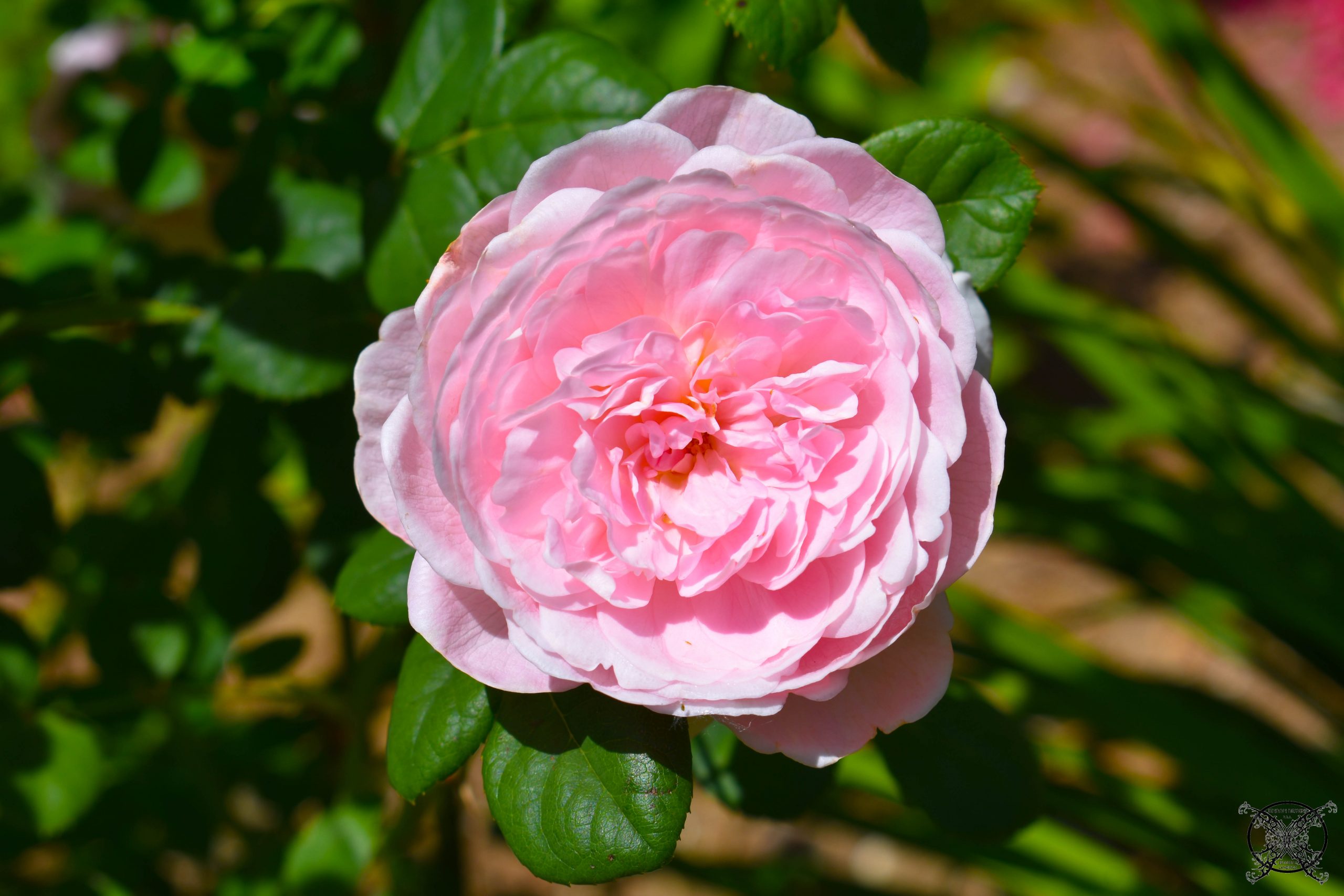 For this I have created specific gardens, like my David Austin Rose Garden, Peony garden, which you can see in the distance, and Hydrangea garden which is just starting to green up. While each garden has several specimens or varieties of flower in them, they will bloom throughout the seasons making a nice garden focal point. I also have a large variety of perennials scattered about the garden to intermix as well. Varieties of greenery and such to fill with is also available too. Here are just a few of my favorites:
For this I have created specific gardens, like my David Austin Rose Garden, Peony garden, which you can see in the distance, and Hydrangea garden which is just starting to green up. While each garden has several specimens or varieties of flower in them, they will bloom throughout the seasons making a nice garden focal point. I also have a large variety of perennials scattered about the garden to intermix as well. Varieties of greenery and such to fill with is also available too. Here are just a few of my favorites:
You can see more about How To Grow Your Own Perfect Peonies and learn the differences between Limelight verse Autumn Hydrangeas at these great garden lovers posts! See more year round garden tips in my Four Season Garden post as well.
Where Do I Buy My Peonies? | Rose Garden Progress ✨
FAQ
Can roses and peonies be planted together?
Yes, roses and peonies can be planted together. They are considered good companion plants due to their similar growing needs and complementary aesthetics.
What not to plant next to peonies?
Avoid planting any aggressive ground cover plants close to peonies, since these can compete too much with peonies and may strangle the roots and crowd the crowns of your plants.
What is the downside of peonies?
Peonies, while beautiful, have some downsides including their susceptibility to fungal diseases like Botrytis blight, which can cause wilting and bud rot. They can also be prone to flopping due to their heavy blooms, especially after rain.
Where should you not plant peonies?
Afternoon shade is fine for plants grown in the Lower South. Where should you not plant peonies? Don’t plant peonies under large trees or other tall plants that shade them from the sun.
How do you plant peonies with roses?
Pairing peonies with roses can create a romantic and luxurious garden display. Choose Compatible Colors: Opt for peonies in soft pastels alongside fragrant roses. Layer the Blooms: Plant peonies slightly behind the roses to allow both to shine. Design a staggered planting pattern, ensuring both plants get enough sunlight.
How many peonies can you plant around a rose?
As peonies generally reach 3 by 3 feet at most, you can plant at least 3 to 4 peony seeds around your rose. Peonies are plants that are small in stature, and can be quite a good choice for small garden spaces. However, peonies and roses should be planted at least 15 to 20 cm apart, in order to allow precious space and breathability at mature sizes.
How to decorate a peony garden?
This idea focuses on bright peonies with a blend of ornamental grasses that grow white flower heads. Thus, it appears to form a natural border that encloses the exquisite peonies. In addition, the viburnums grow behind the peony plants, add an evergreen layer, and become a background to make the flowers stand out. 18. Beautiful Spring Garden Design
Can you plant peonies and roses together?
Loamy, well-draining, slightly acidic soil with an organic component is a must for healthy peonies and roses! Both roses and peonies are perennials, so they will flourish year after year. While you can plant roses and peonies together, they won’t flower together – this is important to note if you are planning a bridal bouquet!
How do you make a cottage garden with peonies?
To create a classic cottage garden featuring peonies: Mix Different Varieties: Combine various types of peonies such as herbaceous, tree, and intersectional peonies to add depth and interest. Add Companion Plants: Incorporate plants like delphiniums, daisies, and lavender to create a harmonious palette.
Do peonies enhance your garden?
With their lush blooms and intoxicating scents, peonies can truly enhance your garden, providing beauty and a touch of elegance. The 17 ideas outlined above offer various ways to incorporate these stunning flowers into your outdoor space, whether through traditional, modern, or whimsical designs.
